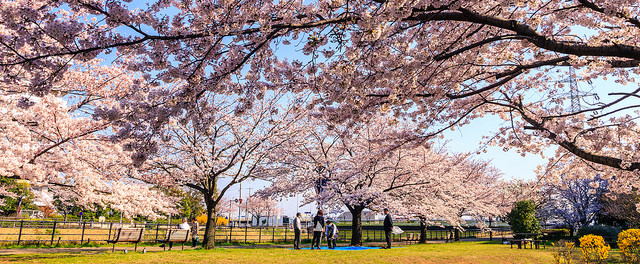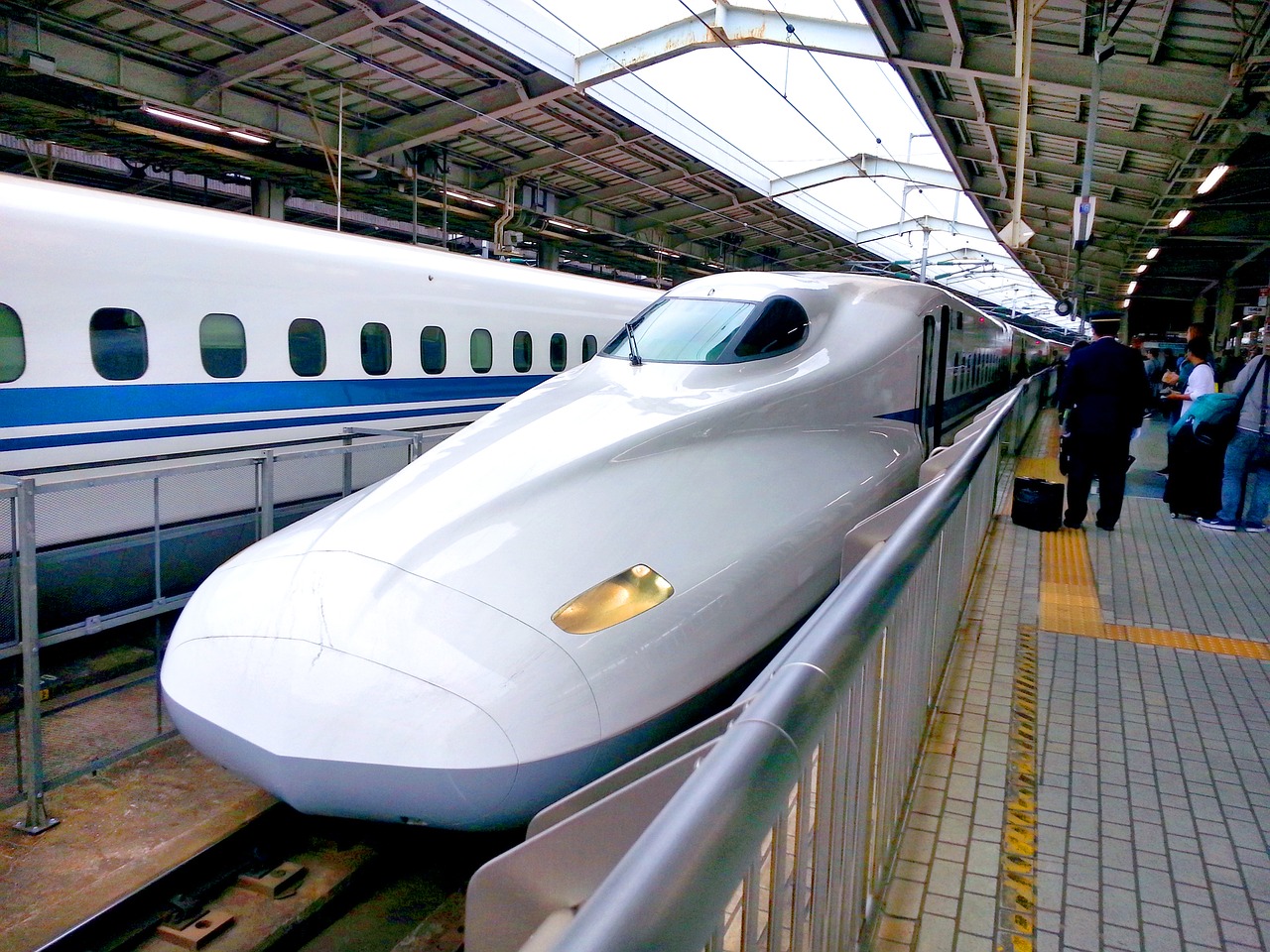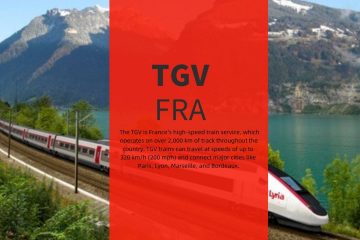Cherry blossom in Japan? Here’s how to get there
Cherry blossom season marks a time of renewal in Japan and it’s also a wonderful time to visit. You’ll find plenty of options for travelling around, and flying is probably the least attractive.

(Credit: Reginald Pentinio/Flickr)
Cherry blossom time in Japan is a much-anticipated event, and G2Rail can help you plan your trip to get the most from this amazing annual spectacle. Travelling around Japan to see the cherry blossoms — Hanami, or “flower viewing” is the Japanese term — can be a delightful and inspiring experience, and your journeys from place to place should certainly add to the experience.
A little background: the custom of hanami began in the 8th Century, and was originally enjoyed only by the imperial court. Soon the samurai class joined in, and eventually, the tradition, along with the food and drinks that went with it, became popular across society. The popular Japanese saying “dumplings rather than flowers” suggests that it’s really the picnics and festivities that are the main attraction of hanami, with the cherry trees simply responsible for getting the party started each year.
There is, however, a deeper symbolism attached to the festival: 1 April is not only a good marker for the start of hanami, it’s also the start of the academic and financial years in Japan.
When to go
If you can make it to Japan between the end of March and the first week of May, you should be able to find cherry blossoms, though you may need to travel as far north as Sapporo to see them.
The season starts in early February, with the first blossoms on the island of Okinawa. As spring advances from the southern parts of the country to the winter snowfields of the north, numerous forecasts and updates are made available, predicting with uncanny accuracy the first day of bloom in each region. Perhaps the most authoritative site is “ Otenki Navigator ” — unfortunately, it’s only available in Japanese, but your web browser will probably do a good job of translating for you.
The web page of the Japan Meteorological Service (in English) is also a great resource.
This year in 2018, Tokyo saw its cherry trees bloom around 27 March, while Kyoto and Osaka saw a season start just a couple of days later, on 28 or 29 March. In the northern centres of Sapporo, Hakodate and Matsumae the first blooms appeared around 30 April.
Getting around
All of the transport options you’d expect in an advanced country are available. You can fly between major cities (though not Kyoto, which doesn’t have a local airport), drive a rental car or take intercity coaches, or take the train, which is by far the most popular option. Japanese trains are fast, modern, and stress-free. Buying a ticket is relatively easy at the station on the day of travel and services are so frequent you’re unlikely to have a problem finding seats.

Japan’s Shinkansen or ‘bullet’ trains are the preferred option for most Hanami fans, but there are less expensive alternatives (Credit: Tikisada/Flickr)
If you plan an extended trip with frequent rail journeys, consider purchasing a Japan Rail Pass before you leave home, as you can’t buy them inside Japan. The passes come with lots of rules and regulations. If you are not a stickler for reading the fine print, you may find the pass is a bit of a hassle, and choose to buy individual journey tickets at the station instead. Either way, Japan’s train network won’t let you down, and you’ll be in amongst the blossoms rather than flying over them at 40,000 feet!
Flying over the cherry blossoms is not the best option. Drive, take the train, or to really save, consider one of Japan’s excellent coach services.
Renting your own car certainly gives you more freedom than the train, but if any of the major cities, especially Tokyo, are on your schedule, you may want to consider whether the stress of driving there (and parking) is worth that extra freedom in the countryside. There’s also cost to consider – a rental car will probably be cheaper, especially for two or more travellers, as Japan Rail is not by any means a “low-cost carrier”. Not an easy decision if these are your two preferred choices. Perhaps a combination of the two might work best?
Finally, if you are on a budget, consider the bus. Japan’s coach services are frequent and, compared to coach services in some countries, definitely upmarket. More importantly, the buses are very clean and, like the trains, tend to run right on time! Definitely a good option if you’d prefer to spend your money on accommodation and not transport.
Some popular locations in Tokyo
In Tokyo, Ueno Park is hanami-central. But it’s crowded, and you may feel that the people are more of the spectacle than nature itself. A calmer, more peaceful spot within city limits is Shinjuku Gyoen with plenty of space for a picnic, and the 200 yen entrance fee won’t break the bank. Chidorigafuchi offers a slightly different scene, with the option of rowing around the moat rather than simply parking yourself under a tree.
In the suburbs of Tokyo, Inokashira Park is a delightful option with hundreds of trees surrounding a pond and eventually covering it with a carpet of pink blossom petals. Showa Kinen Park is another option, about 40 minutes from Shinjuku, offering a vast expanse of green space.
Hanami itineraries
We’ve created some itineraries that allow you to enjoy hanami in three different locations.
This first sample itinerary takes you from Tokyo to Maebashi, some 110 km northwest of the capital, and then on to the coastal town of Kanazawa, a city which has retained much of its Edo-era charm and is extremely popular, though not too crowded, during cherry blossom season.
Starting in Kyoto, our second itinerary takes you to the shores of Lake Biwa and the town of Hakone, before heading to the opposite coast and Toyama City, capital of Toyama prefecture. These destinations have wonderful locations for hanami and they’re each popular with both domestic and international travellers. Toyama is a former castle town and the principal gateway to the Tateyama Kurobe Alpine Route. You have a variety of transport options between each stop, including train, coach and self-drive.
Our final itinerary begins late in the season, in the town of Hirosaki in the north of the island of Honshu. Hirosaki is a major hanami destination, with the experience enhanced by the beautiful castle, an attraction worth seeing at any time of year. From there you have the option of train (via the new undersea tunnel) or car ferry to the island of Hokkaido and our next stop, Hakodate. Fort Goryokaku and Hakodate Park are both excellent hanami spots; each is worth a visit in its own right. From Hakodate, you can choose between driving, luxury coach or train to the final stop, Sapporo.



0 Comments